Wine Spotlight: Lanza-Musto Vineyards Malbec
Lanza-Musto Suisun Valley Malbec is a wine that brings velvety sweetness and dark complexity to the table.
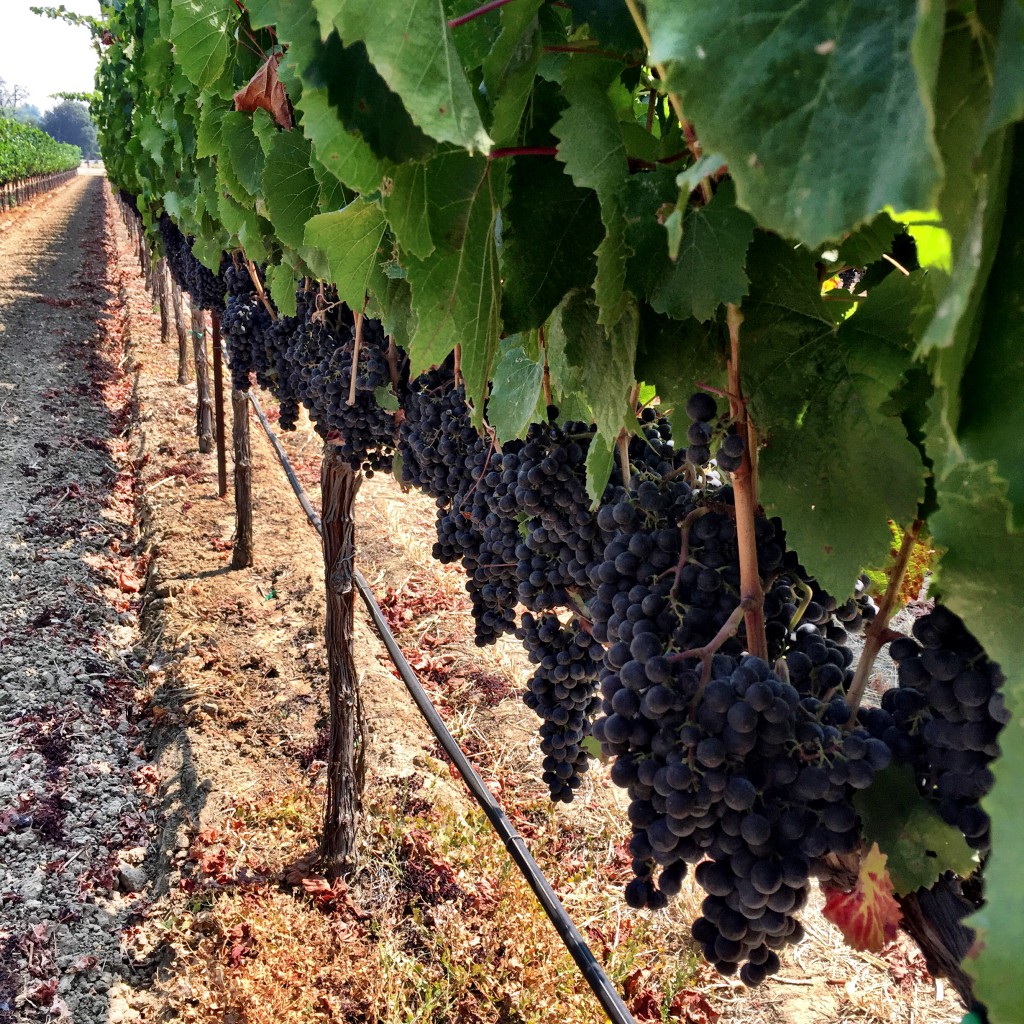
Suisun Valley, located in Solano County, California, is not traditionally known for Malbec wine production like some other regions, but it does have a small and growing reputation for producing high quality Malbec wines. If you’re considering buying Suisun Valley Malbec grapes, here are some reasons to consider:
Unique Terroir:
Suisun Valley’s terroir, characterized by its climate, soil, and topography, offers a unique and distinct environment for grape cultivation. While it may not have the recognition of regions like Argentina (known for Malbec), this uniqueness can result in wines with a different expression of the Malbec grape.
Varietal Exploration:
If you enjoy exploring different expressions of a grape variety, trying Malbec from a less common region like Suisun Valley can be an exciting adventure. It can offer a different flavor profile compared to Malbecs from more traditional regions.
Food Pairing:
Malbec is a versatile wine known for its medium to full body and rich, dark fruit flavors. Suisun Valley Malbecs can pair well with a variety of foods, including grilled meats, hearty pasta dishes, and cheeses.
Exploration:
If you’re an adventurous winemaker who enjoys exploring and discovering hidden gems, Suisun Valley Malbec can be an interesting addition to your wine collection.
Flavor Profile:
Medium bodied, mellow, fruity – raisins, fresh picked blueberries, plum, with soft, fine grained tannins, deliciously drinkable mocha notes.
Previous Season Grape Chemistry:
- Brix: 24.5
- pH: 3.29
- TA: .65gms/100ml
- Clone 9
- Planted in 2009
- Soil: Yolo, Silty Clay Loam
- VSP posititioning
To make an order please contact us via sales@juicegrape.com or call us at 877-812-1137, follow us on Facebook, Instagram, and Youtube, or check out the Harvest Tracker and Winemaker Blog on our website- juicegrape.com.
🍇🍷 Exciting News! The Black Muscat Wine Grapes Have Arrived! 🍇🍷
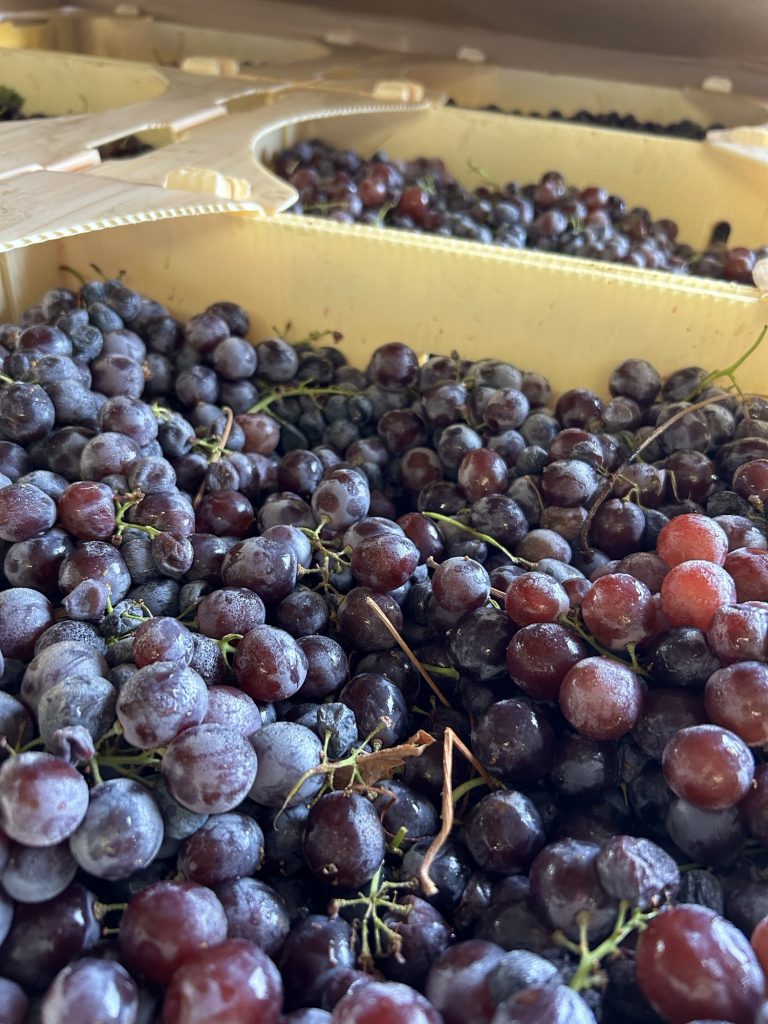
The dock is buzzing with excitement as we welcome the arrival of our beautiful Black Muscat wine grapes, ripened to perfection under the warm sun and nurtured with care.
🍇 Black Muscat
When it comes to grapes, we often think of the popular varieties like Cabernet Sauvignon, Merlot, or Zinfandel. However, tucked away in the world of vineyards is a gem that’s lesser-known but equally delightful – Black Muscat grapes. These grapes are a true delicacy, offering a unique combination of intense flavor, striking appearance, and a rich history. Black Muscat makes a fantastic sweet rosé, light red wine, and is a great base for Raki. In this post, we’ll dive into the fascinating world of Black Muscat grapes and explore what makes them so special.
🌞 A Brief History
Black Muscat grapes have their origins in the Mediterranean and are closely related to the Muscat family of grapes, known for their aromatic and sweet qualities. These grapes have a long and storied history, dating back thousands of years to ancient times when they were cultivated for wine production and used for medicinal purposes.
🍷 Flavor Profile
Black Muscat grapes are known for their stunning appearance. They are a large to medium-sized, round or oval in shape, and have a deep black or purple-black skin. When you hold a bunch of Black Muscat grapes in your hand, you can’t help but be captivated by their dark, enchanting beauty. The real magic of Black Muscat grapes lies in their flavor. These grapes are renowned for their intense aromatics and sweetness.
IN STOCK FOR THIS WEEKEND:
- Grapes: Grenache Noir, Grenache Blanc, Black Muscat, Muscat, Pinot Noir, Tempranillo, Teroldego, Barbera, Cabernet, Merlot, Zinfandel, Old Vine Zinfandel, Mettler Pinot Grigio, Mettler Grenache, Alicante, and Thompson Seedless
- Juices: Cabernet Sauvignon, Merlot, Zinfandel, Grenache, Black Muscat, Mixed Black, Petite Sirah, Pinot Noir, Ruby Cabernet, Syrah, Chardonnay, Muscat, Pinot Grigio, Riesling, Sauvignon Blanc, Thompson Seedless, Viognier, and White Zinfandel
- Always call ahead to make sure you have the most up to date stock information!
Raki & Black Muscat:
Additionally, to wine – Black Muscat is a great grape to use for the drink Raki. Raki is the National drink of Turkey. It is also a popular drink through the Baltic regions and in Albania.
Raki is a traditional alcoholic beverage that is popular in several countries, especially in the Mediterranean region, including Turkey, Greece, Albania, and parts of the Balkans. It is an anise-flavored spirit with a strong, distinctive taste. The production process of raki typically involves several steps:
- Fermentation of Grapes or Other Fruits: Raki can be made from a variety of fruits, with grapes being the most common choice. Black Muscat has gained in popularity over the years to be the preferred grape to use. The first step is to crush and juice the fruit, which is then fermented. Yeast is often added to initiate the fermentation process, converting the sugars in the fruit into alcohol. This initial fermentation usually takes a few weeks.
- Distillation: After fermentation, the liquid is distilled to increase its alcohol content. The traditional method involves using a special copper pot still called a “degirmen” in Turkey or “rakia” in Greece. The fermented fruit mash is heated, and the alcohol vapor is collected and condensed to produce a high-proof spirit. The distillation process is usually repeated to ensure a higher alcohol concentration.
- Anise Flavoring: Anise seeds or aniseed are an essential ingredient in raki production. These seeds are typically crushed or ground, and the resulting powder is added to the distilled alcohol. This gives raki its characteristic licorice-like flavor and cloudy appearance when mixed with water. The anise-flavored alcohol is allowed to rest for a period, allowing the flavors to meld.
- Dilution: Raki is typically consumed by diluting it with water, which also causes it to turn cloudy due to the anise oils becoming less soluble. The ratio of water to raki can vary according to personal preference but is often around 1:1 or 2:1 (water to raki).
- Bottling and Aging: Some raki may be aged in wooden barrels for a short period to mellow its flavors, although this is less common than with other spirits like whiskey or brandy. Once the aging process is complete, the raki is typically filtered and then bottled for sale.
It’s important to note that the production methods and ingredients may vary from one region to another, and there may be slight variations in the production process. Also, the alcoholic content of raki can vary, but it is generally around 40-45% alcohol by volume.
Enjoyed primarily as an aperitif or as an accompaniment to meals, raki has a strong cultural significance in the countries where it is popular, often being consumed during social gatherings and special occasions.
Black Muscat & Rosé:
On the nose there is passion fruit, guava, sweet strawberry, sweet cherry, and papaya. The aromatics continue through the palate with a touch of crisp acidity. As a dry wine this light bodied Rose is full of complexity and flavor. If you’re more of a sweet winemaker, adding about 1-2% Residual sugar to this wine would make for a very aromatic and balanced sweet wine.
Black Muscat Winemaking Recipe:
- Crush the Black Muscat into vat
- Add Potassium Meta to kill native yeast, let sit for 12 hours
- Add Cinn Free, stir must, let sit for another 12 hours
- Press juice after 24 hours on the skins
- Add Booster Blanc and Opti White (dilute in spring water, mix like pancake mix, dump into must, mix up)
- Pitch yeast after 24 hrs on skins, make sure juice is at 65 degrees. If not let it warm up. Use VIN13 yeast.
- Next Day: Add Fermaid O
- Monitor Brix levels daily
- At 1/3 of a drop in Brix (10-8 Brix) add Fermaid K
Please Note:
The color might be light. It darkened up over time. And if it doesn’t darken up enough to your liking, I have some “pixie dust” that will help with the color during the aging process. Also, after fermentation I added Noblesse at my first racking. This is because I thought the acid was a little high and it helped soften the mouthfeel. Every year is different, so you might not need to do this. Taste it after fermentation and then decide.
If you are interested in making Black Muscat wine and having any questions please feel free to reach out to our winemaking professionals via phone or email – 877-812-1137 or sales@juicegrape.com.
Don’t forget about our Winemaking Classes…
Hands-On Winemaking: Back by popular demand is our Winemaker Bootcamp. The September Class will start Saturday September 16th, 2023 at 9:00AM – 12:00PM (runs for 5 weeks). The October Class will start on Saturday October 21st, 2023 at 9:00AM – 12:00PM (runs for 5 weeks). Make sure to sign up via the website or email cmusto@juicegrape.com if you are interested. There is only 1 space left in the September class and only 2 spaces left in the October class!
Winemaker In Your Pocket: Musto Wine Grape and Frank Renladi put together online courses you can access from anywhere! Check out our online classes via our sister site WinemakingInstructions.com.
We look forward to seeing you at pick up this season! 😊
Cheers!
Christina & The Musto Crush Crew
Musto Wine Grape Co. / WinemakingInstructions.com
The most anticipated time of the year is finally upon us – Wine Season is HERE!
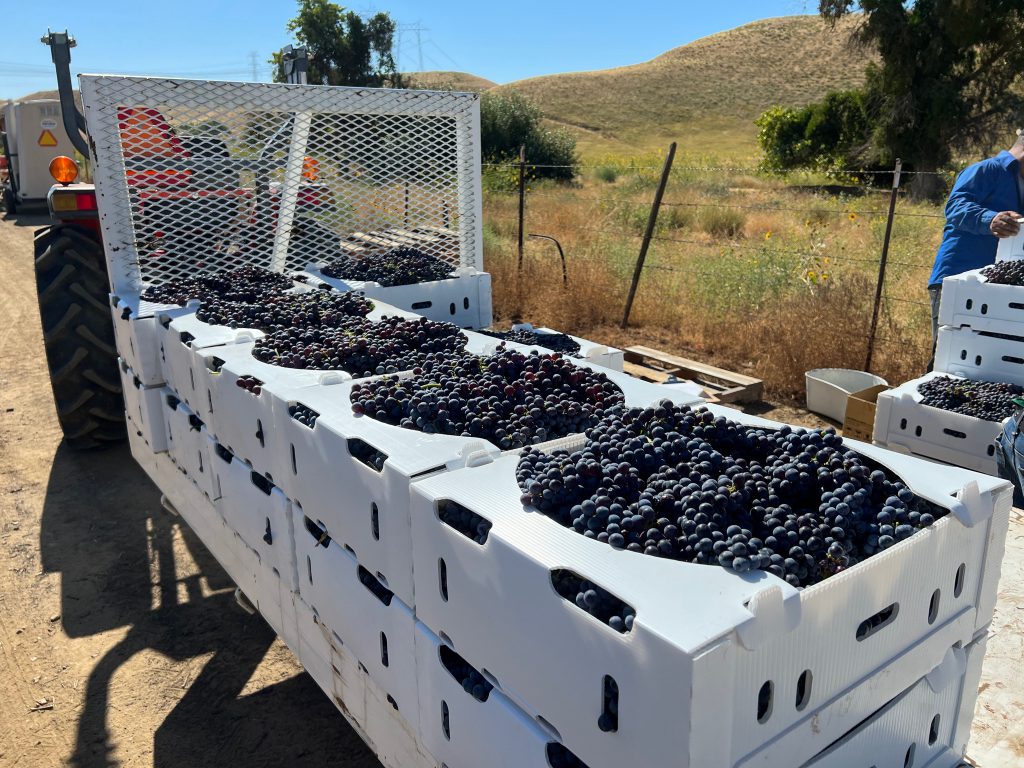
Hello Winemakers,
I’m sure you are itching to get back into the winemaking process. It’s the most exciting time of year in our opinion!
The art of winemaking is truly remarkable and allows us to witness transformative magic unfolding right before our eyes. Just imagine the symphony of aromas that will fill the air as the grapes are crushed, releasing their juices, and bringing forth the promise of a beautiful vintage. Picture the vibrant colors dancing in the fermenters, as the yeasts work their magic, transforming sugar into alcohol. And oh, the joy of witnessing the first bubbles forming during fermentation, a sure sign that our wine is well on its way.
With every batch, we have the opportunity to experiment and refine our craft, constantly pushing the boundaries of what is possible in winemaking. Get excited to make a wine you will love this season!
Here’s what you can look forward to this week:
*If there is something you have your heart set on, please call ahead
- Grapes & Juices Arriving by 9/15:
- Juices: Alicante, Barbera, Cabernet Sauvignon, Chianti, Grenache, Merlot, Mixed Black, Old Vine Zinfandel, Pinot Noir, Red Blend, Sangiovese, Zinfandel, Black Muscat (Rosé) Chardonnay, French Colombard, Pinot Grigio, and White Zinfandel (Rosé).
- Grapes: Grenache, Merlot, Old Vine Zinfandel, Syrah, Teroldego, Black Muscat, Chardonnay, Fiano, Pinot Grigio, Sauvignon Blanc, Thompson Seedless, and Vermentino.
- Olives: Stevie “The Olive King” has secured the green olives for this season. He is bringing in big and small sizes, each in 16lb cases. We will have limited stock so please call ahead before you drive down. They should arrive by Friday 9/15.
- Winemaker Hours: Winemaker Sam is on vacation until September 15th. But Winemaker Barry will be in on Tuesdays, Fridays, and Saturdays to assist you with your fermentation and winemaking questions.
- Harvest Store Hours: We are officially open 7 days a week! Mon-Friday 7:00am-5:00PM, Sat 6:00AM-1:00PM, Sun 7:00AM-12:00PM
- New York/New Jersey Pick Up: D’Arrigo will be a pickup location for us in the Bronx, NY. You can pre-order with MWG and pick up your order closer to home! Ask your sales representative for more details.
- Delivery Services: MWG has an extensive delivery network. If you are interested in delivery, please ask your sales representative for more details.
- Currently In Stock (as of 9/11):
- Grapes: Grenache Noir, Grenache Blanc, Muscat, Pinot Noir, Tempranillo, Teroldego, Barbera, Alicante, and Thompson Seedless
- Juices: Cabernet Sauvignon, Merlot, Zinfandel, Grenache, Mixed Black, Petite Sirah, Pinot Noir, Ruby Cabernet, Syrah, Chardonnay, Muscat, Pinot Grigio, Riesling, Sauvignon Blanc, Thompson Seedless, Viognier, and White Zinfandel
- Always call ahead to make sure you have the most up to date stock information!
Looking ahead to Next Week:
Harvest Updates: Suisun Valley Sauvignon Blanc is around 22 Brix and the Brunello Clone Sangiovese is around 21 Brox. We should see Suisun Valley fruit start to harvest towards the end of September. Lodi will start to harvest more Cabernet, Zinfandel, and Merlot this week. Central Valley harvest is in full swing and will be arriving daily. Washington State Pinot Noir should start to come off the vine around 9/16, and arrive around 9/22. The Fresco Juice order deadline is 9/25 and they should start arriving the first week in October. Italian juices are set to delivery in the first week in October.
Don’t forget about our Winemaking Classes…
Hands-On Winemaking: Back by popular demand is our Winemaker Bootcamp. The September Class will start Saturday September 16th, 2023 at 9:00AM – 12:00PM (runs for 5 weeks). The October Class will start on Saturday October 21st, 2023 at 9:00AM – 12:00PM (runs for 5 weeks). Make sure to sign up via the website (link: 5 Week Winemaking Bootcamp (juicegrape.com)) or email cmusto@juicegrape.com if you are interested. There is only 1 space left in the September class and only 2 spaces left in the October class!
Winemaker In Your Pocket: Musto Wine Grape and Frank Renladi put together online courses you can access from anywhere! Check out our online classes via our sister site WinemakingInstructions.com {link: Learn How to Make Your Own Wine (winemakinginstructions.com)).
We look forward to seeing you at pick up this season! 😊
Cheers!
Christina & The Musto Crush Crew
Musto Wine Grape Co. / WinemakingInstructions.com
cmusto@juicegrape.com
T-minus 7 days and counting until grapes and juices start to arrive!
Hello Winemakers,
We are working hard getting your grapes and juices secured. We should start to see juices and early ripening grapes arrive the week after Labor Day. Our prices have been finalized! Give us a call or shoot us an email to chat about your order this season 877-812-1137 / salesjuicegrape.com.
Juices Arriving Wednesday 9/6: Cabernet Sauvignon, Merlot, Zinfandel, Grenache, Mixed Black, Petite Sirah, Pinot Noir, Ruby Cabernet, Syrah, Chardonnay, Muscat, Pinot Grigio, Riesling, Sauvignon Blanc, Thompson Seedless, Viognier, and White Zinfandel
Grapes Arriving Thursday 9/7: Grenache Noir, Grenache Blanc, Muscat, Pinot Noir, Tempranillo, Teroldego, Barbera, Alicante, and Thompson Seedless
Store Hours: We will be open 7 days a week beginning the weekend of September 9th!
Winemaker Hours: Winemakers Sam and/or Barry will be in the office Tuesday through Sunday starting the week of September 18th. They will be in from 8:00AM-2:00PM. You can also email winemaker Sam at slee@juicegrape.com
Winemaking Classes:
Winemaker Bootcamp: Back by popular demand is our Hands-On Winemaker Bootcamp. The September Class will start Saturday September 16th, 2023 at 9:00AM – 12:00PM (runs for 5 weeks). The October Class will start on Saturday October 21st, 2023 at 9:00AM – 12:00PM (runs for 5 weeks). Make sure to sign up via the website or email cmusto@juicegrape.com if you are interested. There are only 3 spaces left in the September class and only 4 spaces left in the October class!
Next FREE Winemaking Class: Our next Facebook Live/Zoom class will be Thursday, August 31st at 7:00PM. Join us for our class about How to Prep for Harvest” tips for setting yourself up for success and making your favorite wine yet! The class will be held via Facebook Live & Zoom. Make sure to log in and watch as we chat at 7:00PM EST on Thursday, August 31st.
Zoom Link: https://us06web.zoom.us/j/82981391470?pwd=MnJwMVQydEd6QkluTmJBaER6a2F4Zz09
Facebook Live: How do you access Facebook Live? It’s easy. Go to Musto’s Facebook Page {Musto Wine Grape Company, LLC. | Hartford CT | Facebook} on the given date/time, and Frank’s class will automatically pop up on your screen. There you can ask questions in real-time. We hope you enjoy this series and look forward to bringing you more information to help you make your favorite wine!
Online Classes: Don’t forget that you can always access Musto & Frank Renaldi’s online classes via our sister site WinemakingInstructions.com {Learn How to Make Your Own Wine (winemakinginstructions.com))
Keep an eye out for our emails as grapes and juices start to arrive!
Cheers!
Christina & The Musto Crush Crew
Musto Wine Grape Co. / WinemakingInstructions.com
cmusto@juicegrape.com
Field Updates from Our Growers
Hello Winemakers,
We wanted to give a quick update from our growers in the field! We’re raising our glasses high and toasting to the heart and soul of our wines – our incredible growers! 🥂
Without these passionate and dedicated individuals, our delicious grapes wouldn’t be the stars of the show. Here’s to the early mornings and late nights, the unwavering commitment, and the endless pursuit of perfection. Your dedication shines through in every sip we take, and we’re truly grateful for the magic you bring to the vineyards. 🍇
So let’s clink our glasses and raise a toast – your hard work is the essence of our success, and we can’t wait to continue this journey together! 🍷
Pricing Updates:
Prices have been finalized! Give us a call or shoot us an email to chat about your order this season 877-812-1137 / salesjuicegrape.com.
Suisun Valley:
“I’m enjoying this growing season so far this year, reminds of the old normal where we begin harvesting after Labor Day. Hopefully producing a memorable vintage year” – Ron Lanza, Lanza-Musto Vineyards
Lodi:
“This year looks like it will be a great year. It is going to be a later condensed season for Lodi fruit, with everything coming off the vine at once. We are excited about our Old Vine Primitivo crop and the wine it will make. Looking forward to sending high quality fruit to the East Coast.” – Berton Costamagna & Paul Pourte, Costamagna Vineyards
Central Valley:
“The grapes are coming along and look beautiful. We got small traces of rain but nothing to be concerned about. We’re looking forward to start shipping grapes out the first week of September.” – Joe Guerriero
Washington State:
Rattlesnake Hills: “2023 has been a very good growing season. It is rivaling 2021 in terms of growing degree days, so plenty of ample heat for full ripening and rich flavors. The difference between 2023 and 2021 though is that this season’s heat has been relatively even, with no harmful sudden spikes, so we’re seeing very classic vine and fruit behavior in terms of yields and ripening. A little earlier than usual harvest is expected.” – Jeremy Porter, PineBrake Vineyards (formally Allechante Vineyards)
Candy Mountain – “Harvest is on the early side this year. Lighter crop, nice growing season after a cool spring start. Fruit quality is looking excellent. Flavors in the fruit are developed even at lower sugars.” – Marshall Edwards, Shaw Vineyards
Reminder – we will be open 7 days a week beginning the weekend of September 9th!
Below is a Tentative Arrival Dates calendar that covers most of the major grape regions and the fresh juices. Keep an eye out for more updates as we get closer to Labor Day.
Winemaker Hours:
One of our on-staff Winemakers -Sam Lee will be in the store and available for questions on Tuesdays and Fridays from 8:00AM-2:00PM. If you want to speak to a winemaker in person, make sure to stop by and see Sam! You can also email him at slee@juicegrape.com.
Winemaker Bootcamp: You have been asking and we are gearing up for TWO classes this season. Back by popular demand is our Hands-On Winemaker Bootcamp. Dates and information have been posted on the website. If you want to get in on the “early-in” bootcamp list, email cmusto@juicegrape.com for more information.
Next FREE Winemaking Class:
Our next Facebook Live/Zoom class will be Thursday, August 31st at 7:00PM. Join us for our class about How to Prep for Harvest” tips for setting yourself up for success and making your favorite wine yet! The class will be held via Facebook Live & Zoom. Make sure to log in and watch as we chat at 7:00PM EST on Thursday, August 31st.
Zoom Link: https://us06web.zoom.us/j/82981391470?pwd=MnJwMVQydEd6QkluTmJBaER6a2F4Zz09 Facebook Live: How do you access Facebook Live? It’s easy. Go to Musto’s Facebook Page on the given date/time, and Frank’s class will automatically pop up on your screen. There you can ask questions in real-time. We hope you enjoy this series and look forward to bringing you more information to help you make your favorite wine!
Don’t forget that you can always access Frank Renaldi’s online classes via our sister site WinemakingInstructions.com.
Cheers!
Christina & The Musto Crush Crew
Musto Wine Grape Co. / WinemakingInstructions.com
cmusto@juicegrape.com
Which Wine Juice Should I Choose?
Not sure which wine to make? Check out our list of “Wine Juice Tasting Notes”. Learn about the different winemakig juices that are available to you. Hopefully something will spark your winemaking interest. 🙂
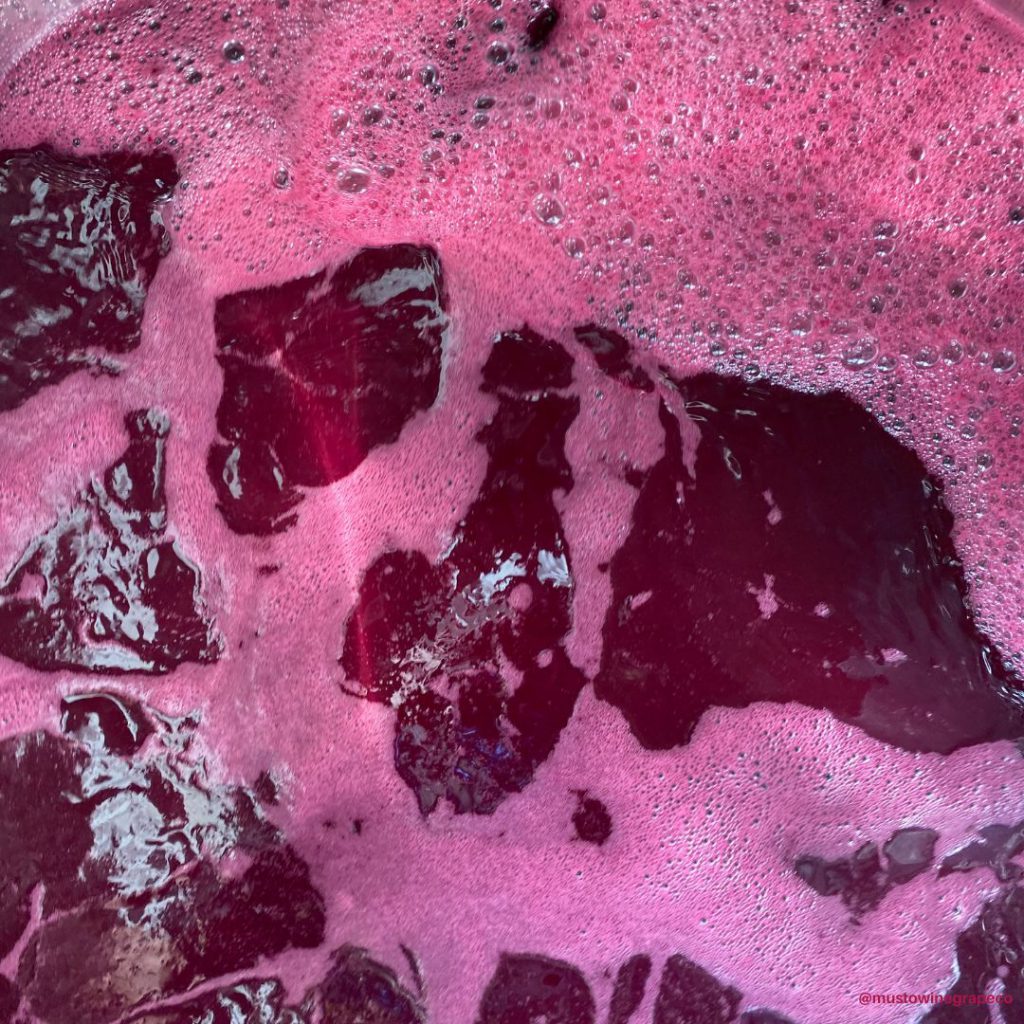
Wine Juice Tasting Notes
Full List of Juices Offered this Season – 2023 MWG Juice List
Alicante – This varietal has roots in the southeast of Spain and is also cultivated in North Africa and California. On a stand-alone basis, the wine has simpler berry and red fruit flavors, but it is mainly used to increase the intensity of color and body in other grape varieties. An excellent blending wine.
Amarone – 100% Italian Amarone juice to make a dry, robust styled red wine. Amarone is typically made of partially dried grapes, generating a very complex and concentrated flavor. Suitable for aging.
Amorosso– Amore di Rosso. Italian for “Love for Red”. This deep, dark tannic full-bodied red wine will envelop the senses with a plethora of scents including floral, fruity and spicy aromas. Great potential for aging, which will reward the most patient winemaker.
Barbera – Light to medium bodied, fruit forward, easy drinking wine. Lush fruit flavor, peppery, spicy notes.
Barolo – 100% Italian Nebbiolo juice to make a traditionally styled Barolo. Firm tannins, with a velvety finish for those who choose to age it.
Brunello – 100% Brunello juice from Italy. Rich color and flavors with hints of plum, jam, and smoke. A wine that will only get better with age and impress any wine drinker.
Burgundy – Freshly sourced premium red grapes to make a classic “Burgundian” style table wine. Big red fruit flavors, with a medium body and tannin content make this an excellent choice for pairing with any dish. A crowd pleaser and family favorite.
Cab Sauv/Merlot Blend – A perfect blend of Old World and New World, this 50/50 blend of Cabernet Sauvignon and Merlot is a classic pair of two of the best red wine grapes, coming from one of the fastest growing wine regions of the new world. Makes a rich, fruit forward, red wine.
Cabernet Franc – Cabernet Franc is one of the classic Bordeaux varietals. It makes a medium bodied red wine, with notes of black fruit and black pepper. An excellent addition to spice up a blend or great on its own.
Cabernet Sauvignon – The “king of wine grapes” California Cabernet Sauvignon has gained world fame for its rich berry flavors, superb tanninc structure, and excellent ability to age for long periods of time. We recommend D254 yeast to make a more fruit forward wine and D80 yeast to make a more spicy, earthy wine.
Carmenere – Carmenere is a deep garnet hued wine with fruit forward notes of plum, cherry, and currants. Similar to Merlot in body and texture.
Castel de Papa – This wine exudes admiration. Highlighted by its ruby color with flashes of ripe blackberry purple, you will surely be charmed by its ripe fruit, lavender and spice aromas. Moreover, its medium level acidity supports a firm tannic structure along with a high level of alcohol that augments its distinguished fullness of flavor on the palate.
Chablis – Bright, crisp apple and pear flavors, medium body, and aromatic intensity. Creates an easy drinking summer wine. (Chardonnay, unoaked style)
Chardonnay – Rich, full bodied, classic Californa Chardonnay with big fruit flavors of apple, pear, and citrus. Creates the classic big, bold Chardonnay that put Napa on the map.
Chardonnay/Semillion – A classic blend of crisp Chilean Chardonnay and the classic French Semillion grape. The Semillion lends a bit more bright acidity and citrus flavors to the classic Chardonnay profile of apple, pear, and hints of vanilla.
Chenin Blanc – The most popular white varietal from South Africa, Chenin Blanc is light gold in color, very aromatic of tree fruits, white flowers, and hints of citrus. Light flavors of apples, bits of jasmine, and sweet ginger. This wine can benefit from oak treatments or be enjoyed on its own.
Chianti – One of the most famous red wine blends in the world, this harmonious balance of Sangiovese and Cabernet Sauvignon provides ripe red berry flavors, a bit of tart acidity, and a medium bodied finish that will satisfy any Italian wine enthusiast. Big aromas of cranberry and sweet plums jump from the glass and linger on the palette. Excellent when aged with oak.
Dolcetto – “Little sweet one” in Italian, this grape from the Piedmont region is known for its higher sugar content and moderate to lower acidity. This wine will be deep purple in color, and have a higher tannin content, giving it a very full bodied mouthfeel. The higher tannins help to support the potential higher alcohol as well.
French Colombard – A white grape traditionally used for blending with Chardonnay. Has a full bodied mouthfeel with ripe tree fruit flavors. Sweeter flavors of ripe Bosc pear, sweet Fuji apple, and ripe Persimmon give this a refreshing yet fruity profile. Can benefit from oak aging.
Gewurtztraminer – A white grape famous for its strong, floral aroma, this grape is wonderful when made on its own or blended with Riesling. It has a very strong, perfume-like aroma of honeysuckle, jasmine, and stone fruits. Flavors translate directly to the palette with notes of white flowers, peach, and a spicy, white pepper finish. Can be made in a sweet or dry style.
Granbarile – A dry, full-bodied and spicy red with a nose that is as complex as they get. A refreshing acidity, pronounced tannins and velvety texture make this wine a classic Italian red.
Grenache – Big, luscious, fruit flavor, fresh from California! Grenache is a thinner skinned grape with a medium tannin content and big fruit flavor. Ripe raspberries, cherries, and plums jump from the glass in the medium bodied, fruit forward red wine.
Grenache (Rose style) – Fresh pressed California Grenache, with limited skin contact, to generate a beautiful pink rose style wine. This rose has big berry flavors and can be made in a sweet or dry style
Il Toscano – A classic Tuscan blend straight from Italy! Sourced from premier Italian growing regions in and around Tuscany, the blend of Sangiovese and Cabernet create a full bodied, classically style Italian table wine. This wine has a medium tannin concentration, ruby in color, and ripe red fruit flavors. A superior quality red wine blend.
Lambrusco – A lighter bodied, fruit forward table wine from Italy. The grapes are fresh pressed in Italy, creating a lighter, fruity red wine, that is perfect for early drinking. This wine has a bright acidity and fresh berry flavors. This wine does not need aging and can be consumed early.
Malbec – An international classic, Malbec is the perfect blend of full bodied and fruit forward. Malbec has a medium to high intensity tannin level with big cherry, blackberry, and earthy notes. It can benefit from bulk aging or can be consumed after one year of aging. This wine will benefit from oak treatments.
Malvasia Bianca – A white grape indigenous to Greece, Malvasia creates a beautiful full bodied, fruity white wine. With big flavors of pear, stone fruit, and white flowers, this grape can be made in a variety of styles from dry to sweet and is also conducive to blending.
Merlot – One of the world’s most popular red wine making grapes. Merlot has an incrediblly jammy fruit profile with cooked fruit, blackberry, and leather notes. A medium tannin and lower acid content make this a very smooth drinking wine. Excellent when aged with oak and also an excellent blender with most red grape varieties.
Mixed Black – Sourced from an ancient vine vineyard in California, these grapes are of premium quality and have rich, complex fruit flavors. The vines are so old, that the growers aren’t sure of their genetic background, however they are reassured by their consistent quality and yield. An excellent variety for the beginner or the advanced winemaker. This wine will benefit from aging and some oak contact.
Montepulciano– A classic Italian varietal, Montepulciano is very aromatic, with a spicy flavor and tannic finish. This is a full bodied wine with blackberry, pepper, and a rich mouthfeel. This wine is unique as it can be consumed young or be allowed to age, which will soften the tannin content.
Moscato – One of the most popular white winemaking grapes, Moscato is known for its robust fruity and floral aroma and big fruit flavors of peach, tropical fruit, and bits of florals. This wine is very versatile to our winemakers as it can be made in a variety of styles, from sweet to dry and can be blended with other wine grapes to add flavor and enhance aromas.
Muscat of Alexandria – Muscat of Alexandria is an ancient vine varietal that is typically used for dessert wine due to its robust fruit flavor and natural sweetness. It is bursting with flavors of tangerine, sweet mandarin oranges, honeysuckle flowers and sweet melons. An excellent variety to add into a blend to add fruit flavor and complexity or to savor on its own.
Nebbiolo – Nebbiolo is one of the most sought after winemaking grapes in Italy. Nebbilolo is the primary grape in Barolo and Barbaresco It is lighter in color yet full bodied and tannic, with rich dark red fruit flavors. This wine will benefit from exposure to oak and aging.
Nero D’Avola – A classic Italian grape featuring flavors of black cherry, black plums, tobacco, anise, and pepper on the finish. This creates a bold and complex wine that is benefitted from oak contact and aging.
Old Vine Zinfandel – Old vines (35+ years) from the Zinfandel capitol of California create dense, concentrated fruit and earth flavors. Notes of black cherry, raisin, prune, tobacco, and a subtle spiciness give this wine an incredibly complex and rich array of flavors. This wine matures well after a few years of aging and will be wonderful when aged with oak.
Petite Sirah – Deep, intense, garnet color with matching concentrated black fruit notes of blackberry, plum, and black plum on the finish. This intense red wine can add tremendous color to any blend and is also exquisite on its own. It will benefit from aging for at least 2 years.
Pinot Grigio/Chardonnay Blend – A crisp, lively blend of bright and tart Pinot Grigio with the fruity, more full bodied Chardonnay. This great white blend has smooth fruit flavors of granny smith apple, lemon, and pears. An excellent white table wine and can also hold up to some oak treatments.
Pinot Grigio – One of the most famous and loved white wines in the world, Pinot Grigio is a classic palette pleaser. Bright, fresh, acidity with flavors of lemon, lime zest, and white flowers create a very refreshing wine suitable for all seasons.
Pinot Noir – A winemaking classic, Pinot Noir is bursting with bright fruit flavors. Complex berry flavors mingle with subtle bits of earth and cedar to create a fruity and savory wine. Lighter to medium bodied, this wine can be made in a variety of styles from light and fruity to a heavier, bolder, oaked style.
Primitivo – A boldly fruity and robust Italian clone of the Zinfandel grape, Primitivo has rich fruit flavors of sweet black plums, black currants, and boysenberries. It has a terrific jammy quality and firm tannins structure that holds up well to oak treatments and aging.
Riesling – Riesling, a fun and fruity grape that can be made ina very wide variety of styles from sweet to dry. Riesling showcases flavors of fresh peaches, apricot, sweet pears, and touches of minearlity on the finish. Depending on the style that you choose for the wine, it can be as sweet as a dessert style wine or bone dry with softer, more subtle fruit.
Ruby Cabernet – Ruby Cabernet is a cross of traditional Cabernet Sauvignon and Carignane. This wine is incredibly dark in color with bright cherry flavors. It is excellent when aged with oak and can also be a good blender with other wines to add richness in color and more fruit to the blend.
Sangiovese – An Italian winemaking classic! Sangiovese is a medium bodied wine with a bit of acidity. It has bright red fruit flavors of cranberry, red plum, pomegranate, and tart cherries. It holds up well to oak treatments and is excelled when blended with other red grapes such as Cabernet or Merlot.
Sauvignon Blanc – Sauvignon Blanc is an incredibly refreshing and flavorful white wine that is a superb summer sipper. Sauvignon Blanc has bright, fresh acidity with notes of grapefruit, melon, and lemon zest. It does not require oak treatments or any long term aging. It will provide a great, refreshing wine for the warmer months and is excellent when paired with any fish or seafood.
Shiraz – Shiraz has become an icon for Australian winemaking and now we can bring the juice directly to you. This Australian grape juice is rich and complex with lots of black plum, blackberry, and touches of earthy notes like tar and spice. This wine would benefit from oak contact and from aging.
Syrah – Syrah is a classic French winemaking grape with a full body, lots of fruit, and a complex earthy finish. Black cherry, black plums, and tobacco flavors mix well with any oak flavor profile. This wine a wonderful blender; an essential part of a popular GSM blend.
Thompson Seedless – The secret ingredient in many classic Italian winemaking recipes. It can be used as a natural means of adding acidity to red wine blends or can be fermented on its own to create an easy drinking table wine.
Trebbiano– Trebbiano is known by many names, including Ugni blanc, the primary grape in Cognac production. This mild and smooth, white wine is classically blended with Malvasia Bianca and has smooth fruit flavors of apple, pear, and a touch of citrus. It can be made and consumed quickly and used in blends.
Valle Dei Tempi – This Italian classic presents an undeniable charm accompanied with a subtle and well-established reputation. You’ll notice its inviting and strong ruby-red color matched with tannins that exude refinement and sophistication immediately. Its balanced acidity allows for a subtle yet complex nose of vanilla hints while your taste buds are excited with a savory blend of cherry and spices with slight floral notes.
Valpolicella– The primary grape for Amarone, the Valpolicella grape has concentrated fruit flavor, jammy qualities, and a full mouthfeel. Complex, firm tannins, give a long lasting finish to the rich, darkly fruited wine.
Viognier– A bright, full bodied alternative to Chardonnay! If you love the weight and fruit of Chardonnay but crave something different, Viognier is a great choice. It has rich, tropical fruit flavor with pineapple, guava, and mango notes and a creamy texture. An excellent wine served bone dry or slightly sweetened.
White Zinfandel – One of the most popular wines in America, White Zinfandel is a very easy drinking, smooth blush wine. It has ripe strawberry, watermelon, and raspberry flavors with a light body and refreshing finish. This wine can be made dry or sweet to the individual drinkers taste.
Zinfandel – Zinfandel is an incredibly fruity varietal with robust red and black fruit such as raspberry, prunes, currants, and cherries. Full bodied, firm tannins, with a great aging potential, this wine is excellent with oak aging and stainless aging. A full-bodied, red wine lovers dream!
To make an order please contact us via sales@juicegrape.com or call us at 877-812-1137, follow us on Facebook, Instagram, and Youtube, or check out the Harvest Tracker and Winemaker Blog on our website- juicegrape.com.
Tentative Arrival Dates
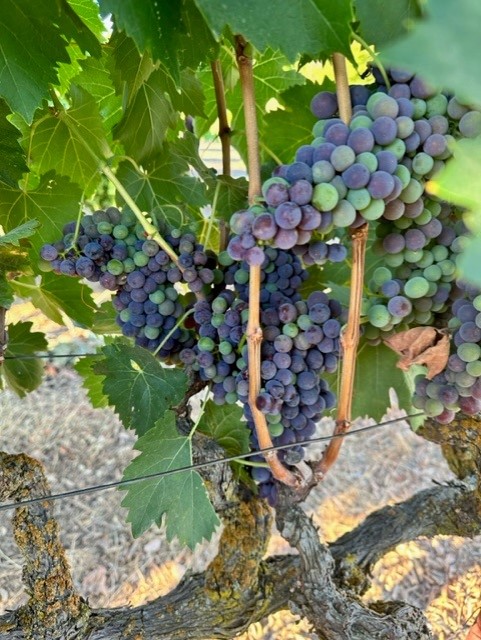
We are working on finalizing our prices, we will have them finished by next week.
As of now, we are on track to receive grapes from Central Valley and Fresh Juice the week after Labor Day. Our grapes from Lodi, CA will start arriving around September 11th. Lanza grapes will start arriving in mid-September. Washington State should start to arrive in early to mid-October. The Fresco Juices and Italian Juices should arrive by the first week in October.
We will be open 7 days a week beginning the weekend of September 9th.
We are looking forward to working with you this season. Please keep an eye out for Emails, the Harvest Tracker, the MWG Blog, and our Social Media for more information.
2023 Harvest Report
Every year we work to bring you the highest quality products at the best prices. This season we have done just that. We have some new vineyards being added to the portfolio that will knock your socks off! And there will be new wine grapes available from the high-quality, reliable sources you’ve come to know and love.
Let’s get started with the Harvest Report!
To keep up to date on harvest dates check in with us via sales@juicegrape.com or call us at 877-812-1137, follow us on Facebook, Instagram, and Youtube, or check out the Harvest Tracker and Winemaker Blog on our website- juicegrape.com.
THE GRAPES
Suisun Valley, CA – Lanza-Musto Vineyards: Suisun Valley was established in 1982 and is one of the oldest AVAs in California. Suisun Valley is home to a group of grape growers and winemakers who put their heart and soul into everything that they do. Located southeast of Napa Valley (sharing a county line), Suisun Valley lies in the foot slopes of good grape land between the picturesque Vaca Mountains to the east and St. George Range to the west. The Suisun Bay that connects to the San Francisco Bay sits to the south, lending a unique cooling coastal breeze. The soil is made up of volcanic rock, silt, sand, and clay allowing it to grow many different types of wine grapes; having over 28 varieties planted within this eight-mile-long and three-mile-wide AVA. We are expecting a high-quality year! The grapes got some decent rain, which resulted in fertile soils, nutrient-rich vines, and exceptional skin quality. The crop looks to be the size of a normal crop year, and we are currently on track for normal ripening and harvesting times. The Lanzas are introducing a new box, which will be sturdier with ample airflow for travel. We will have Barbera, Chardonnay, Cabernet (Clone 169, Clone 15, and Clone 8), Merlot, Malbec, Muscat Cannelli, Petite Sirah, Petite Verdot, Riesling, Sangiovese, Sauvignon Blanc, Syrah, and Tempranillo available this fall.
Lodi, CA – Home to some of our oldest standing contracts and relationships, Lodi is a premier wine region consistently on the rise. With the LODI RULES sustainability effort moving full force through the AVA, we have seen and continue to see great wine-producing fruit come out of Lodi. During the growing season, warm, sunny days allow for optimal ripening of wine grapes. By contrast, cool winds off the Pacific Ocean which travel inland over a network of waterways act as a natural air conditioner for the region, helping winegrapes maintain balanced acidity. This season we have a “new” Primitivo coming in. We were able to procure some of it last season, but this season we will have a good amount of Old Vine Primitivo. This vineyard was planted in 1902! Along with this special Primitivo, we will have fruit from Mettler Ranch, Costamagna Vineyards, Zinderella, Valley Beauty, and Contra Costa just to name a few. This season we should start to see Lodi fruit come off the vine in early September. It is looking to be a normal-sized crop with good-looking berry bunches and seed development. We should see Lodi fruit start coming off the vine in early September, hitting MWG’s dock around early-mid September.
Central Valley, CA– Central Valley is California’s agricultural heartland. It is composed of two valleys that stretch almost 500 miles down the center of the state. The Sacramento Valley and San Joaquin Valley border on the east, by the Sierra Nevada Mountains. The total acreage under wine grape cultivation in the Central Valley is around 895,000 acres. To say Central Valley is the leader in California’s wine grape production would be an understatement. With many sub-AVAs, the Central Valley offers a lot of delicious winemaking grapes with a lot of history. Some of the oldest grape vines in California are grown in Central Valley. Since it is a hotter region, these will be some of the first to come off the vine. If you are interested in Central Valley fruit be ready to crush after Labor Day.
Washington State– We are excited to be bringing you a new vineyard option from Washington this season – Candy Mountain AVA. One of Washington States’ newest AVAs, Candy Mountains’ south-facing slope sits just southeast of the Red Mountain AVA. At around 900 acres, it’s also the smallest AVA in the state. With outstanding growing conditions, it produces, rich fruit-forward grapes with nice minerality and tannins. We will be bringing in Cabernet from Candy Mountain this season. It is looking like a lighter crop and an earlier season this year for Washington State. Candy Mountain is looking to harvest around September 25th, and Wahluke Merlot around the 1st week in October. The Wahluke Cabernet Franc should start to harvest around October 15th. Our Pinot Noir from Rattlesnake Hills should harvest the earliest, sometime around September 20th.
THE JUICES
We bring in juices from all over the world! Below is information regarding our juices and their availability this fall.
California Fresh Juice – We source premium California juice from all over the state. Winemaking juices are a great resource. You can make great wine without bulky equipment. Our fresh juices are ready to ferment when you get home. They have native yeast in them from the grape skins. You can let the native fermentation take place or you can inoculate with your preferred yeast. Either way, you will have a delicious wine that is ready to drink sooner than later. *We always suggest adding yeast because of how long the juice traveled.
California Fresco Juice– The difference between the Fresco Juices and the Fresh Juices is that the Fresco Juices are inoculated with yeast, enzymes, and other “seasonings” that help the wines have a successful fermentation, better color, aromas, tannic structure, and mouthfeel. We call it the “set and forget” juice. It is a great product that produces high-end results.
Italian Fresh Juice– We source premium juices from Puglia and other regions of Italy. These juices create wines that resemble that of the old country. Wines full of flavor and history! They have native yeast in them from the grape skins. You can let the native fermentation take place or you can inoculate with your preferred yeast. *We always suggest adding your own yeast because of how long the juice traveled.
Italian Fresco Juice– The difference between Fresco Juices and Fresh Juices is that the Fresco Juices are inoculated with yeast, enzymes, and other “seasonings” that help the wines have a successful fermentation, better color, aromas, tannic structure, and mouthfeel. We call it the “set and forget” juice. It is a great product that produces high-end results.
NY State – Our NY State portfolio offers hybrid winemaking juices in 5-gallon, 60-gallon, and 275-gallon sizes. Due to this season’s frost, we will not have as many varieties available. Please email or call Christina if you are interested in these juices.
As always Mother Nature can throw us a curve ball. To keep up to date on harvest dates check in with us via sales@juicegrape.com or call us at 877-812-1137, follow us on Facebook, Instagram, and Youtube, or check out the Harvest Tracker and Winemaker Blog on our website- juicegrape.com.
Montepulciano 2020 By Joseph A. Picone, DMD
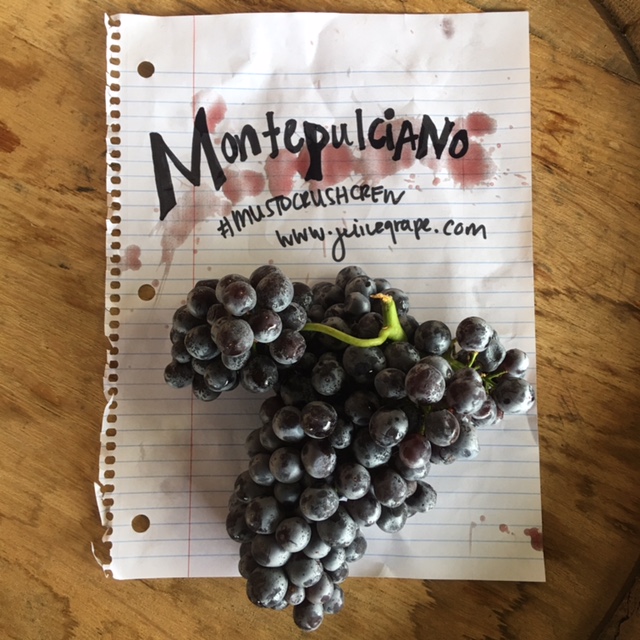
Montepulciano 2020 By Joseph A. Picone, DMD
I had the pleasure to obtain 10 (36lbs) cases of Montepulciano grapes from Musto Grapes (Frank Musto) on October 10, 2020. Making wine using the many varieties of first class Musto sourced grapes has been an Annual fall event for the Picone family and our friends for the past 30 years or so. Over the years, I have made Cabernet Sauvignon, Merlot, Old Vine Zinfandel, Sangiovese, Malbec, Reisling, Chardonnay, Sauvignon Blanc, Moscato, and White Zinfandel to name a few. Each having their own unique qualities to enjoy. Frank and his crew are great in providing all the resources and guidance needed for the first-time wine maker all the way to the seasoned-pro. I was fortunate to have taken a one semester class years ago at Naugatuck Community College on Wine Making given by Bob Herold which together with Frank’s support team has allowed me to create some delicious wines over the years.
I would like to share my experience with you on making this year’s Montepulciano 2020.
The grapes were outstanding. The Brix reading on the refractometer was 25. The clusters were full and the berries were a beautiful deep purple. The boxes were well packed with few if any leaves. We crushed the 360lbs of grapes and immediately added some potassium metabisulphite to kill any wild yeasts. My crusher is also a destemmer, so all the stems were separated from the must during this process. The pH of the must started at 3.70 which wasn’t surprising due to the high Brix reading. I added an appropriate amount of Tartaric acid to bring the pH to a more desirable 3.41 the day of crush. 25 ml of Color Pro enzyme was added at this time as well.
At approximately 24 hours post crush, the Must was inoculated with 35 grams of yeast BM 4X4 in a solution containing GoFerm yeast nutrient. The temperature of the Must at the time of inoculation was 60 degrees F. The yeast solution was well constituted throughout the must. Periodic punching down of the “cap’ was done every 6-8 hours throughout the primary fermentation time.
At 48 hours post crush, the Must temp was 66 degrees F at the Brix reading was 23.5. Fermaid O was added.
At 72 hours post crush, the Must temp was 75 degrees F and the Brix reading was 20. Fermaid K was added.
At 96 hours post crush, the Must temp was 82 degrees F and the Brix reading was 16. I added oak chips to the vat.
At 120 hours post crush, the Must temp was 78 degrees F and the Brix reading was 8.
At 144 hours post crush, the Must temp was 72 degrees F and the Brix reading was 4. 0.9mg of Malolactic culture VP41 was added to the Must and thoroughly mixed in.
At 168 hours(7 days) post crush, the Must temp was 70 degrees F and the Brix reading was 3. The Must and remnant skins were carefully pressed using a bladder press. The raw yield was approximately 27.5 gallons. The Must was placed in cleaned and sanitized demijohns utilizing airlocks to allow CO2 to escape while fermentation progresses, albeit very slowly. The residual skins were heavily consumed during the fermentation leaving behind very little structure. The color extraction was excellent and provided a deep rich purple wine. More Oak chips were added to each of the glass carboys/demijohns.
The slow fermentation in the demijohns went uneventfully and at 2 months, careful racking was accomplished and an appropriate amount of Potassium Metabisulphite was added to help kill off any more yeast cells(30ppm).
At 6 months post pressing, another racking was accomplished without the addition of any sulphites.
At 9 months, I have just begun bottling and I am very pleased with the wine. It is a crystal clear, deep purple, medium to full body, somewhat fruity flavored wine. I expect it to pair well most any dish but have enjoyed it with pasta, pork, veal, and chicken thus far.
Sincerely,
Joseph A. Picone, DMD
Thank you Joseph for sharing your Montepulciano winemaking experience! If you would like to make Montelpuciano emails sales@juicegrape.com or call 877-812-1137.
7 Tips for How to Prep for the Chilean Wine Harvest
7 Tips for How to Prep for the Chilean Wine Harvest 🍇
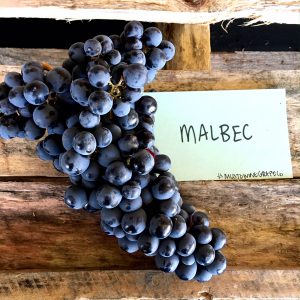
1. Clean and organize your winemaking cellar
2. Take inventory of your fermentation supplies and re-stock
3. Check all wines that are aging – top off, make SO2 adjustments
4. Inspect and double check your tools and equipment
5. Decide if you want/need to upgrade or replace any equipment
6. Look over past winemaking notes
7. Bottle any wine you need to in order to free up space for this seasons wines
Have you ordered your Chilean winemaking products yet?
Give us a call at 877-812-1137 or email us at sales@juicegrape.com to get your set up!






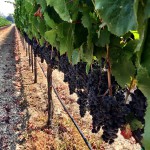
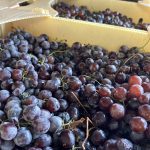
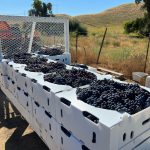

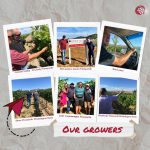
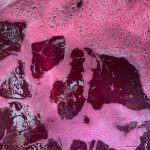
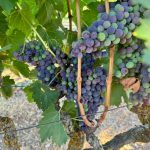
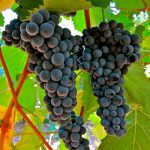
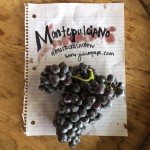
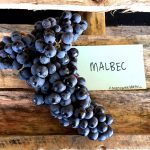
Recent Comments